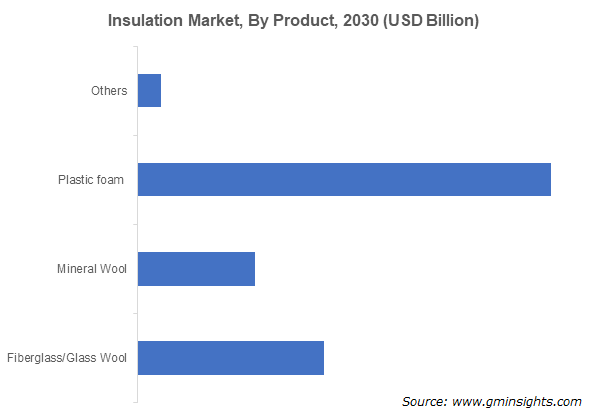Home > Construction > Construction Materials > Insulation Materials > Insulation Market
Insulation Market Analysis
- Report ID: GMI2579
- Published Date: Sep 2022
- Report Format: PDF
Insulation Market Analysis
The plastic foam segment is expected to witness growth rate of around 7% and will reach a valuation worth USD 53 billion by 2030. The increasing popularity of plastic wool insulation can be credited to its superior thermal resistance, inexpensiveness, and relatively low vulnerability to insects and moths compared to naturally derived insulation materials such as sheep wool insulation. The rising concerns about environmental sustainability and rapid growth in the utilization of recycled materials may positively influence the plastic wool insulation demand.
The residential construction application accounted for more than 50% of the insulation market share in 2021 and is speculated to exceed USD 46 billion by 2030. The increasing number of housing projects driven by the robust economic landscape and the consistent improvement in disposable incomes may create new growth prospects for the industry. As per Eurostat facts and figures, the household investment rates in Cyprus, Finland, Netherlands, and Germany accounted for 12.5%, 12%, 12%, and 10%, respectively in 2020. These investments, coupled with the strict government regulatory framework towards sufficing the proper building codes and insulation, may foster product adoption across the residential sector.

Regarding the regional landscape, the Asia Pacific insulation market is set to account for nearly 45% of the revenue share by 2030. Rapid population growth and surging urbanization and industrial development, paving the way for infrastructure expansion are likely to fuel the regional industry statistics. The Asia Pacific has witnessed a positive economic outlook and a substantial rise in people's living standards, driving the adoption of energy-efficient insulation solutions. Moreover, the increasing emphasis on providing better roads and building infrastructure by governments across regional economies such as China, India, and Japan may transform the regional market dynamics.

